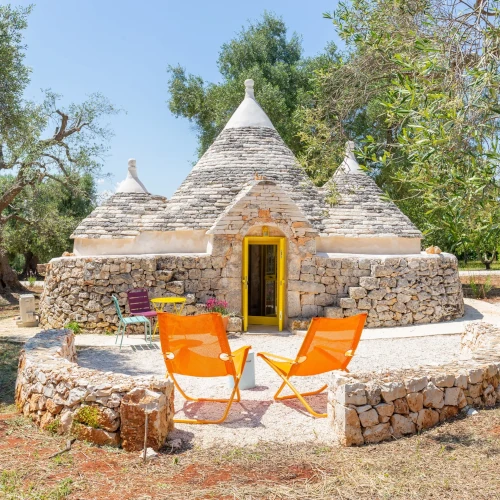Ah the trulli houses. Unique, iconic and found only in the beautiful southern Italian region of Puglia. What is it about these quirky cone shaped houses that has people from all over the world fascinated by them?
Not only are they extremely popular from a holiday rental perspective so make an ideal investment but what is it like to live in a trullo all year round? For those of you who have admired the trulli from afar but were unsure about the restoration process, take a listen to the experience of some of the locals.
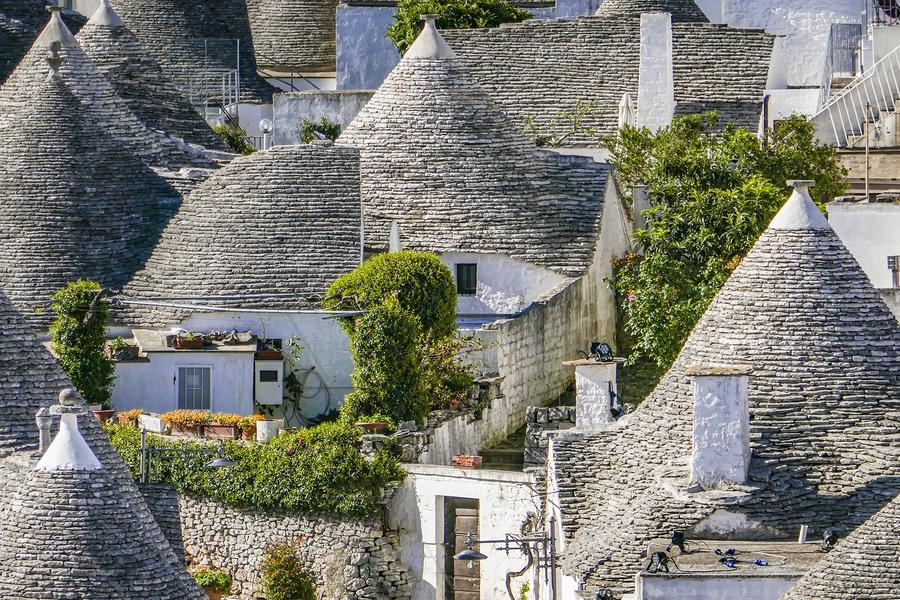
Meet Davide Bufalino….or Dave as he is known amongst the expat community. Dave is a structural and civil engineer from upstate New York City and was transferred to Puglia more than 11 years ago for a 1 year work contract and has remained since!
Now the expat community is very tight knit, if you do a great job you will be recommended to everyone, if you do a bad job, your business will be over before its even started. Dave is highly recommended and thought of amongst the expat community in Puglia for all the work he has done restoring properties (namely trulli) in the region.
Here is a mini interview I constructed with Dave, so he can share some light on what it means to restore a trulli house.
How long have you been helping expats renovate their trulli homes?
I have been renovating trulli and other historical structures for the past 11 years.
Is the process to renovate a trullo difficult? Are there any certain restrictions one needs to consider? Do you need to apply for any planning permission?
There is a degree of difficulty in trulli renovation. Unlike typical structures, trullo walls are very thick (sometimes exceeding 1 metre). The walls are an outer and inner skin of stone and between filled with earth, rubble and stone. This makes cutting through them quite difficult,; for example: installing a window, or a drain pipe through the wall. Additionally the round walls and conical ceilings all inter connect to support themselves. So you can’t simply “rip a wall down”.
Trulli are protected so you need to respect them. Just like an ancient olive tree, you can’t demolish them and when restoring them you must keep the trullo intact. The good news is, in certain regions when restoring a property, for example a “piano casa” (ground floor home) you are allowed an extra 20% increase in volume of the size but with a trullo you can increase the size to 100%.
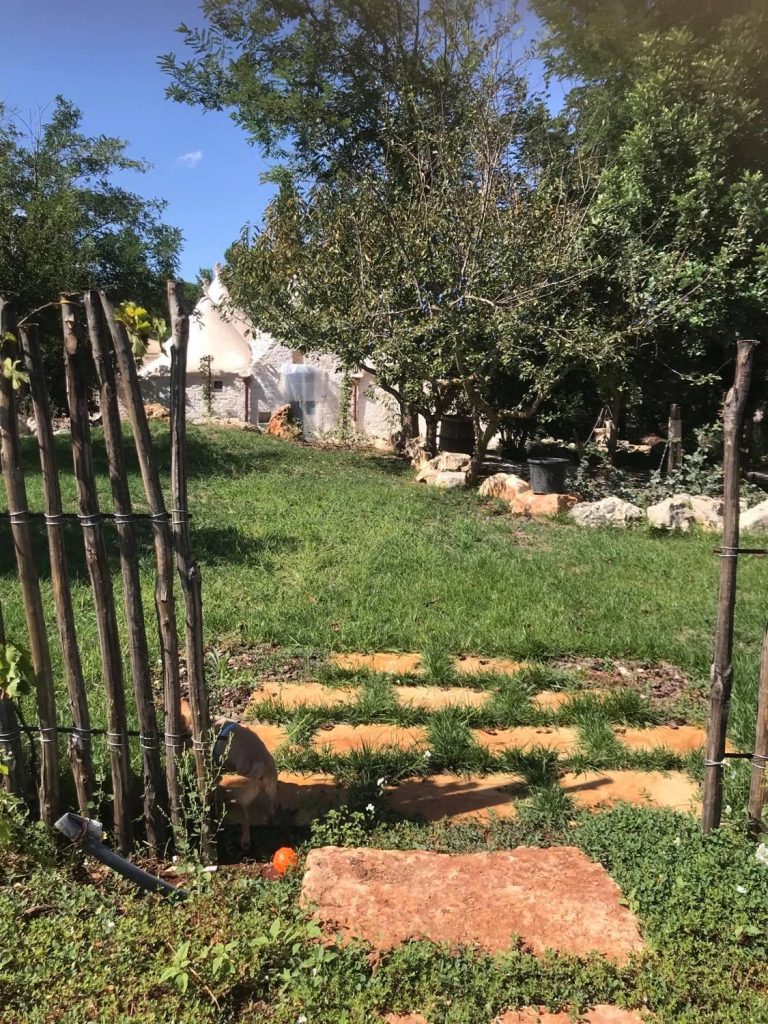
Is it a long process to renovate a trullo?
Renovating a trullo is not considerably longer than any other renovation project. Unless you reconstruct the cones. This is much more extensive than a standard roof with a specialized tradesman. Sometimes a trullo/trulli are in a cluser. If the intention is to make a 1 bedroom, 1 bathroom and a kitchen etc, this becomes typical of any renovation project. Bedrooms and living rooms are quicker than kitchens and bathrooms.
What advice, coming from a building perspective would you give to prospective buyers looking to purchase a trullo?
My advice? Trullo are small and dark. Adding windows is a must. Considering the wall thickness I mentioned above, this is not cheap. Also, have a professional inspect the cone. These can be rebuilt but at a large expense. There are an abundance of trulli for sale throughout Puglia, but make sure you choose ones with the cones intact.
I wanted to also obtain a perspective of what it is like to renovate and live in a trullo property so I contacted my good friend Elisa Doro, who has recently restored a trullo property called Trullo Trelisa in the countryside of Martina Franca.
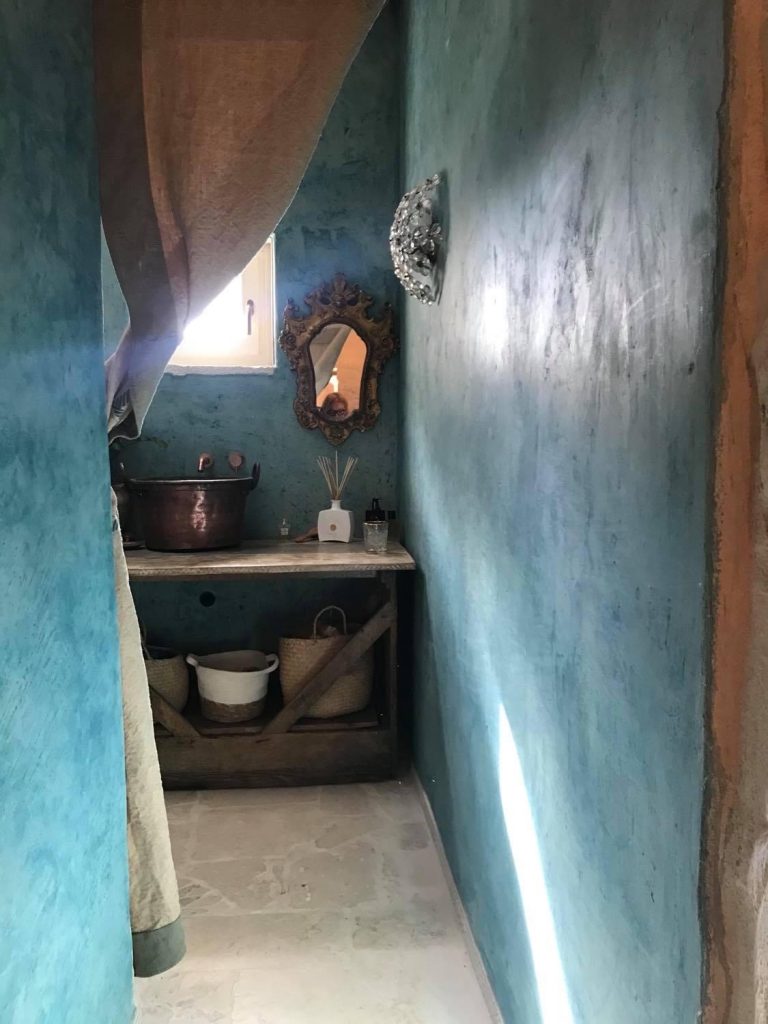
What was it that first attracted you to the idea of purchasing a trullo?
The first time I saw a trullo I was with my ex husband on holiday from Australia in the late 1980’s. It was love at first sight. I returned a few times and stayed in trullos maybe 5 or 6 times and then the seed was planted for the idea of a trullo. When I separated from my husband in 2017 I came to Italy with my girlfriend who had never been to Puglia and whilst staying in a trullo she suggested why don’t you buy one? So I did! I saw 7 or 8 trulli but when I walked into my one it was love at first sight.
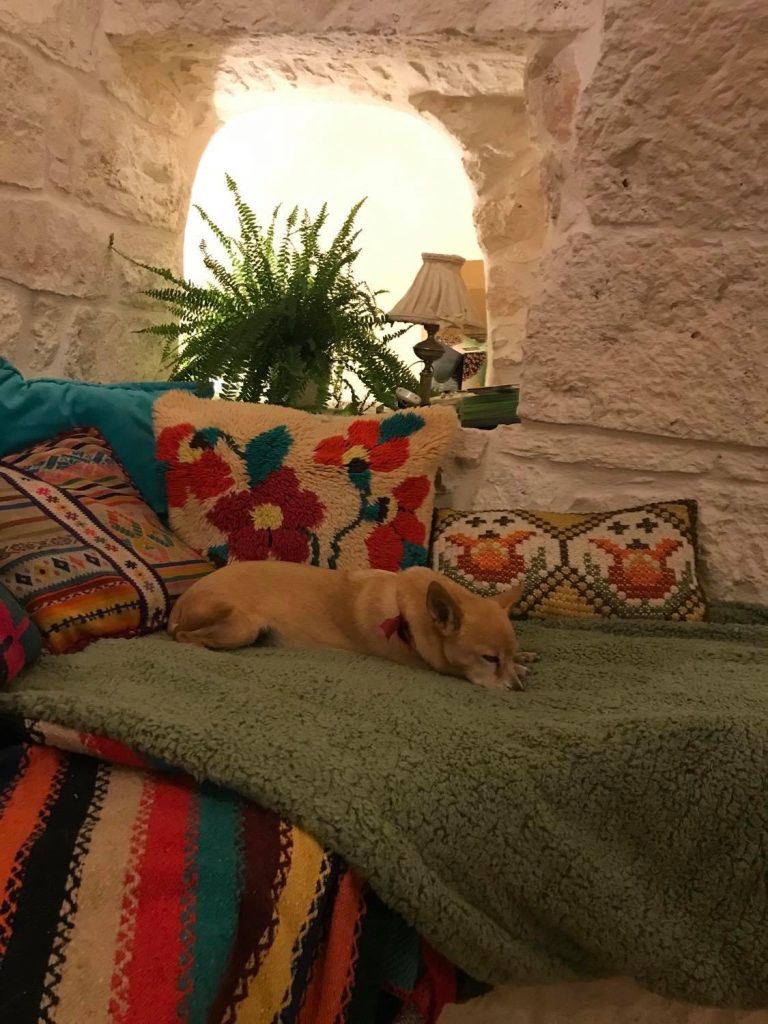
Was the trullo in complete need of restoration? What works did you do?
I wish I had known you then when I was about to buy this trullo but unfortunately I didn’t! I had the idea that I could just paint the outside of the trullo, get it re-wired and just move in. But it actually needed a lot more work than I had thought. I had no advice, no one to ask as I didn’t know anyone and the trullo are a particular building. It was quite daunting. I think I was too naïve, I bought this property as it was my dream and I had some money to restore it and I thought I could do it, not knowing how the Italian system works. I got some quotes and I didn’t really know what I was doing until I came across a builder who I thought I could trust who I handed over the trullo and he wanted to manage the restoration but it wasn’t the right thing that I should have done. All the plastering came off from the inside and outside, we took the floor out, the “chianche” to be sliced because we were putting in under floor heating. We dug out all the concrete outside and landscaped the garden, new sewerage system, new plumbing and electrics.
Then it looked like the roof had problems. The big decision for me was, do we re-do the cones or do we coat them all? We decided to forgo the works as it was going to be too expensive and the process took quite a long time. The restoration project started in May 2018 and finished in April 2020. We took longer as we wanted to create unique finishes throughout the property, like recycled wood and stones.
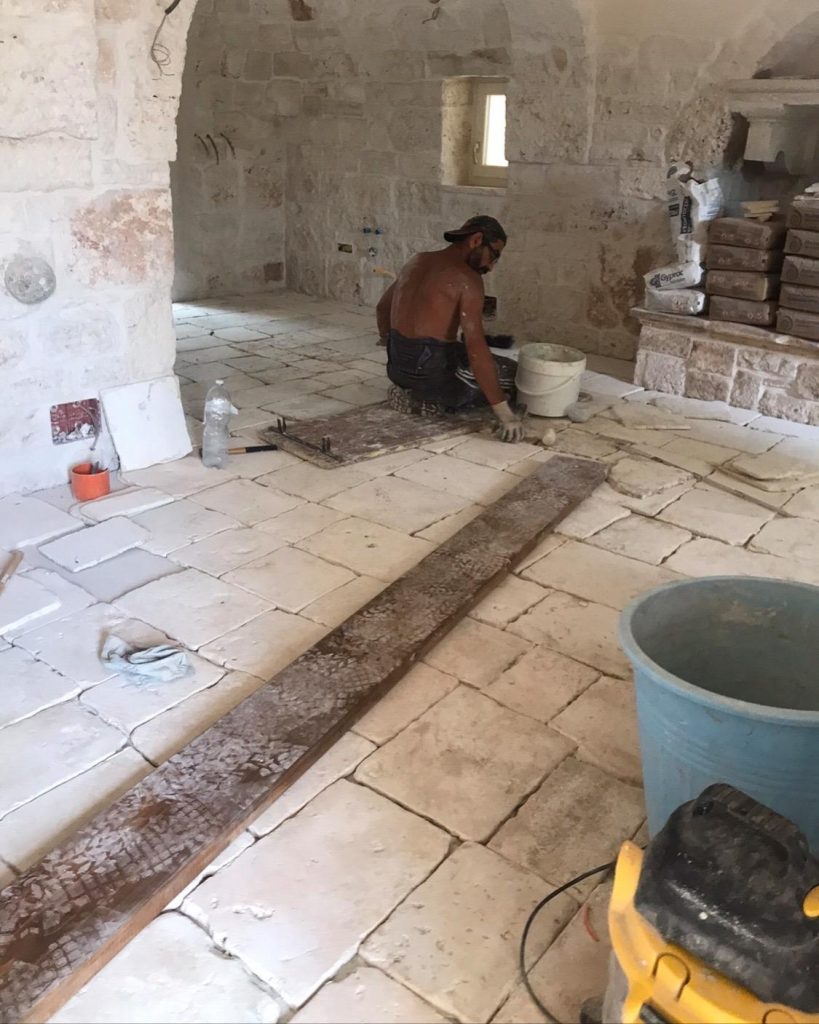
What is it like to live in a trullo property?
We moved into the trullo in October 2019. It is magical living inside a trullo. The energy of the conical shaped roofs and the thick stone walls and knowing how ancient they were, its very unique. The open fireplace, the nooks and crannies. Its amazing to live in. It is quite cold so I am glad I put the under floor heating in. It is beautiful, I would recommend to anybody! It’s hard to compare living in a trullo as opposed to a normal property. There is something really indescribable and magical about laying in your bed and looking up at the cone.
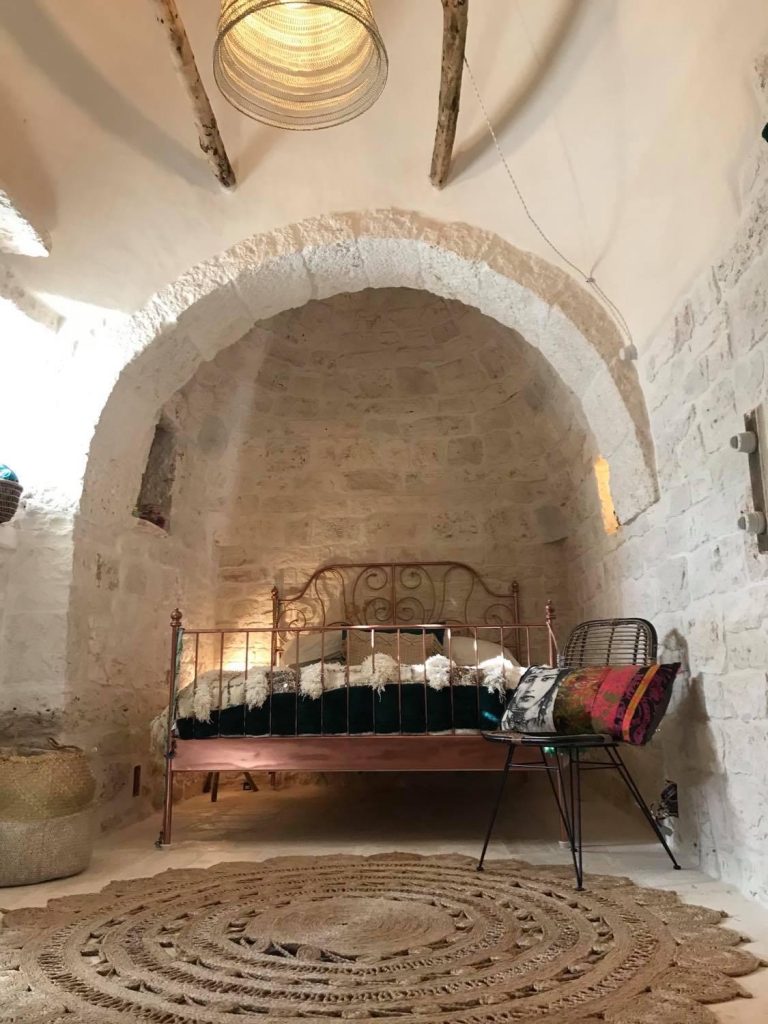
Is it a property you could live in all year round?
You could live in it all year round, as we do have the wonderful fireplace and floor heating but it is very expensive to heat.
What advice would you give to anyone looking to buy a trullo?
I would advise to really look around first, look at the area as that will determine the price. If you are buying in the Valle d’Itria, you will have a lot of restrictions and that can make it more costly and time wise as planning permissions can take up to two years. Get yourself a good “geometra” (surveyor) and if you want to be involved in the restoration process, be careful who you choose, and make sure they are trustworthy and are doing a good job. You will need to have money behind you as its cheap to purchase a trullo but it is not cheap to restore. I would invest in something called an “intercapedine” which assists with blocking the dampness and humidity from the trullo as these types of issues are common. It isn’t cheap to install but it is worth it.

